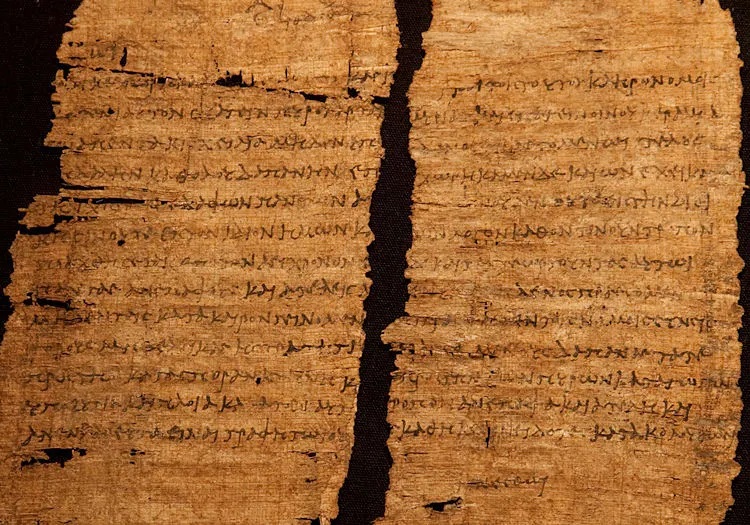
The sole surviving sample of Queen Cleopatra’s handwriting, found on an ancient papyrus, reveals a single Greek word, “ginesthoi” (Greek: γίνεσθοι), meaning “make it happen” or ” so be it”.
This remarkable document is a royal decree dated back to 33 BC. It granted tax exemption to Publius Canidius, a Roman officer closely associated with Mark Antony. According to the papyrus, Canidius was permitted to annually export ten thousand bags of wheat and import five thousand amphorae of wine without taxation. However, what captured imaginations was a Greek postscript, which could be translated as “make it so.” Believed to be Cleopatra’s handwriting, it hinted at her direct involvement.
Notably, this paper was signed two years before the Battle of Actium in 31 BC. In that prominent fight, Mark Antony and Cleopatra faced defeat against Roman Emperor Octavian Augustus.
Internal Handwritten Note From Cleopatra
Dutch professor of ancient history Peter van Minnen stated that “this document was supposed to be an internal note from Cleopatra to a high-ranking official.” According to him, it bore the distinct handwriting of a court scribe.
What historians believe to be Cleopatra’s handwriting, a single word granting tax exemption for an associate of Mark Antony's who would command his army during the Battle of Actium. The word she signed at the bottom in greek “ginesthoi” in English: “Make it so / Make it happen" pic.twitter.com/YQWeUCbkD1
— Daniel Holland🎗🏴 ॐ (@DannyDutch) September 20, 2020
Furthermore, van Minnen emphasized the personal nature of the message, pointing out that it lacked a formal introduction from the queen herself. The composition of the manuscript is laconic. It consists of the text of the decree, Cleopatra’s handwritten consent, and the date of receipt in Alexandria, Egypt.
Experts agreed that Cleopatra would have been the sole authority to endorse such decrees given the papyrus’ nature. High-ranking officials would have recognized her handwriting as they reproduced and disseminated the documents.
Ancient Mummies as a Source of Ancient Documents
To this day, this remains the sole text potentially bearing Cleopatra’s handwriting. In many respects, the survival of this document can be attributed to sheer luck. Egypt, with its arid climate, allows a vast amount of ancient manuscripts to endure the test of time.
An unexpected source for uncovering historical material lies in the realm of mummies. Discarded and fragmented old papyri were once deemed worthless. They found new intended purpose, as they were used to fill the cavities of newly embalmed mummies. Alongside aged fabrics, these documents absorbed excess moisture, inadvertently preserving historical treasures.
This particular decree sheds light on Cleopatra’s role as a ruler deeply engaged in the day-to-day governance of her realm. It stands as just one among thousands of texts that she likely dictated and possibly personally signed during her administration of Egypt.
Today, this papyrus containing Cleopatra’s handwriting has found its place in the Egyptian Museum and Papyrus Collection in Berlin.
See all the latest news from Greece and the world at Greekreporter.com. Contact our newsroom to report an update or send your story, photos and videos. Follow GR on Google News and subscribe here to our daily email!



